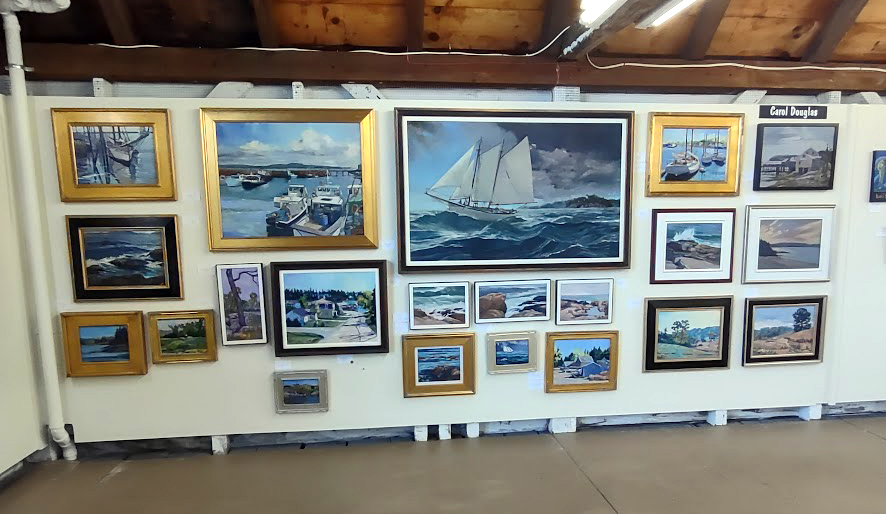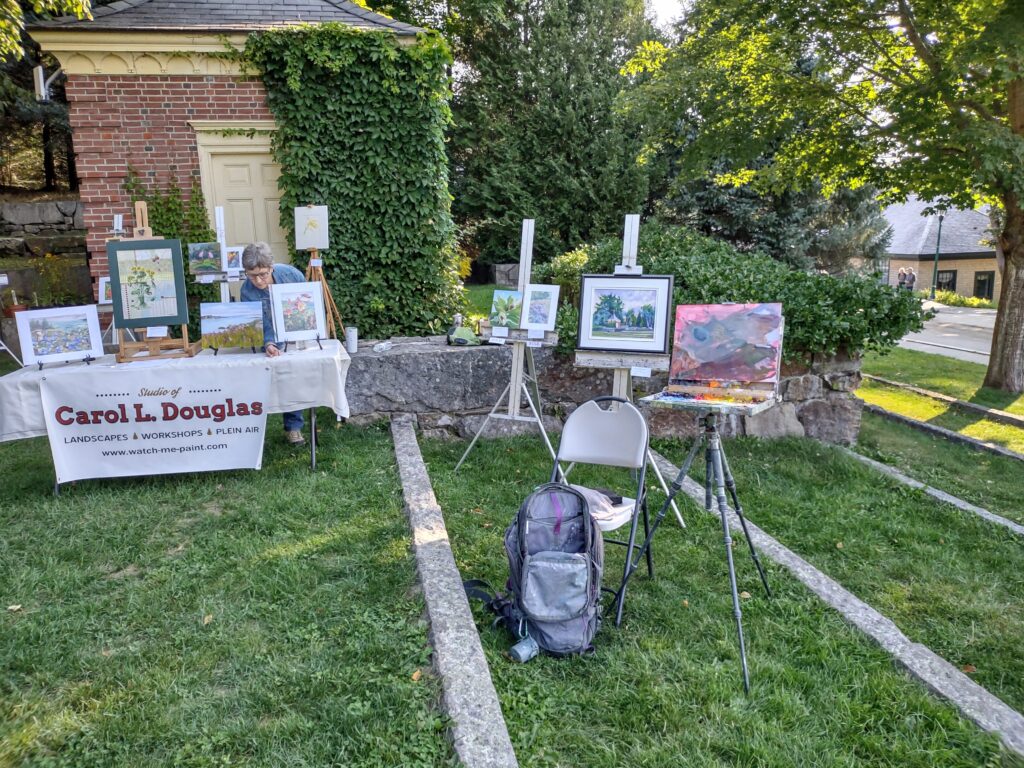Growth in painting sales is almost all online, which means that we either learn a new way of doing things, or we retire.
 |
| Belfast Harbor, 18×14, oil on canvasboard, Carol L. Douglas |
This weekend my open-air gallery at 394 Commercial Street opens for the season. It’s a soft opening, meaning that the brilliant Aubrie Powell isn’t making any noshes (sorry about that). I’ve been so busy painting that I forgot to do any advance marketing. Them’s the travails of a one-man show.
To make up for that, I’m having a 25% off sale. Yes, that’s any painting in the gallery, including my newest work. That’s an unheard-of discount, only made possible because I’m my own boss. Traditional galleries don’t have sales. That’s because they operate on a consignment basis. They must clear discounts with every artist they represent. In addition to that being a daunting task, artists operate on notoriously narrow margins.
Why am I still doing open-air when COVID restrictions are ending? I found I like the warm light, soft breezes off Rockport harbor, and the less-restrictive space of my side yard. My former gallery space is now rigged up as a Zoom teaching studio. COVID changed my workflow permanently. It drastically winnowed my galleries. I especially rue the closure of Kelpie Gallery in Thomaston and Maine Farmland Trust Gallery in Belfast. Both were wonderful galleries with curatorial vision and purpose.
COVID showed us the weakness of the traditional gallery model. Growth in painting sales is almost all online, which means that we either learn a new way of doing things, or we retire gently into the night. I’m not ready to go there yet.
 |
| Beautiful Dream (Rockport), 16×12, oil on birch, Carol L. Douglas |
One thing I do not miss is getting damaged frames back from events and galleries. I spent a long time on Thursday taking adhesive labels off the backs of frames and this afternoon I’ll be touching up dings. Anyone dealing with art should know to not use tape or other permanent adhesives anywhere on a painting or its frame. Thank goodness for Goo-Gone.
My summer hours will be:
- Monday—open this Memorial Day, otherwise closed
- Tuesday—noon-6
- Wednesday—noon-6
- Thursday—1:30-6
- Friday—noon-6
- Saturday—noon-6
You can text or call me at 585-201-1558, or message me here.
 |
| Fish Shacks, Owl’s Head, 14×11, oil on canvasboard, Carol L. Douglas |
Thursday’s opening is later because I teach plein air in the mornings.
As you all know, I teach a variety of workshops, in Acadia National Park, Arizona, New Mexico, Wyoming, Florida, and right here in Maine aboard the schooner American Eagle. That’s enough to satisfy anyone’s wanderlust, but for those who are looking for something here in the Rockland area, I want to recommend two of my plein air buddies.
Eric Jacobsenis new in town, but a familiar face on the national art scene. He will be teaching Painting Expressive Landscapes through Coastal Maine Workshops from July 13-16. Ken DeWaard will be teaching Design! Essence! Design! there from August 9 to 13.
I paint with these guys frequently and I know their character well. They’re patient and kind and they know their craft, so I’m sure they’re good teachers.






